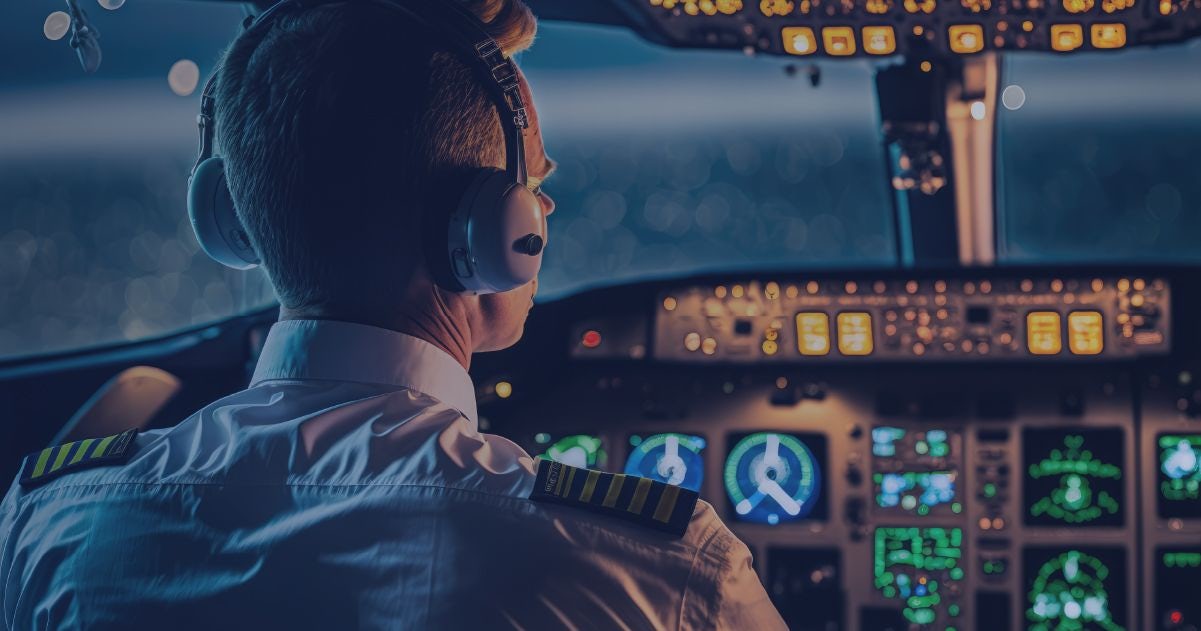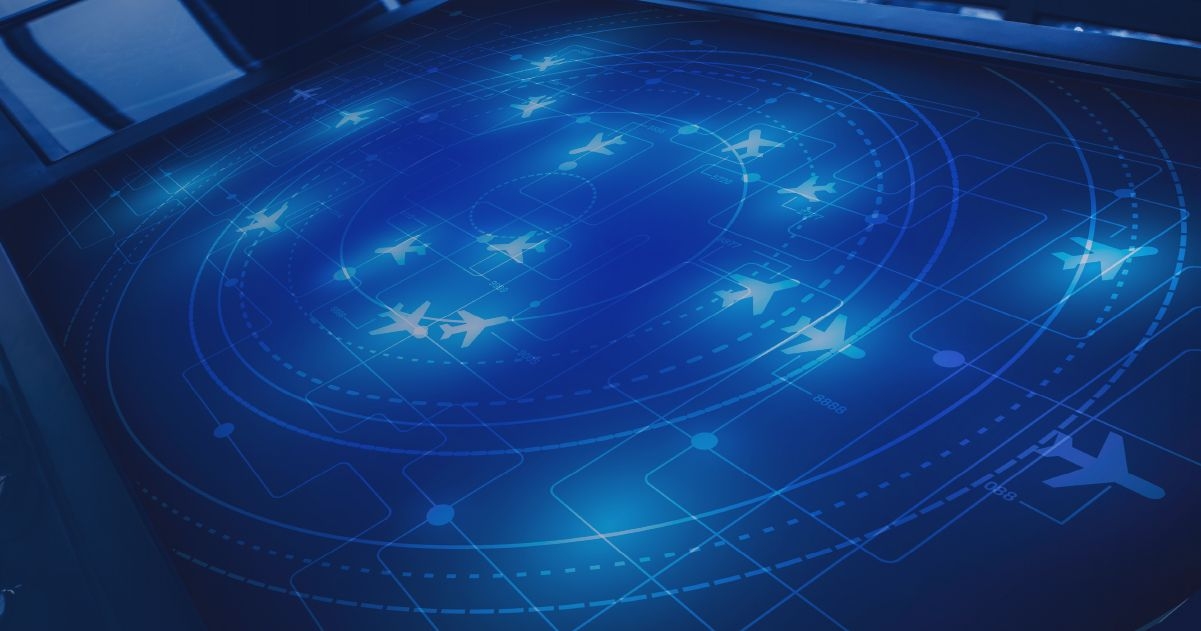As humans are the weakest link when it comes to air safety, current air traffic management and aviation technology trends should definitely be on the radar. Air navigation services experience rapid development propelled by emerging technologies to help air controllers act faster and make better decisions.
Air traffic control constitutes the most sensitive part of the whole air traffic management process. As a rule, controllers are carefully selected and thoroughly trained, but the work can be high-stress at times, and failing to keep top concentration levels can have catastrophic results.
However, although human error is responsible for even 80% of all aviation accidents, that’s usually a pilot error, with many overlapping factors within the accident chain. But while aircraft crashes happen mainly during the landing and takeoff phases, the role of ground teams, with air traffic controllers topping the list, cannot be underestimated.
In this article, we’ll present the current situation of air traffic management, the challenges it has to face, as well as the ways emerging technologies are trying to help tackle them. Some of the present-day trends in this area, transforming the aviation industry, will be listed. We’ll focus on air traffic control (ATC) service that belongs to air traffic management (ATM).
Table of contents:
1. Air traffic management – overview & challenges
2. Emerging tech trends in air traffic management
3. Transforming the aviation industry with high tech – wrap-up
Air traffic management – overview & challenges
Aviation disasters usually result from a combination of mistakes, and ATC controller errors can be in the mix, too. Plane crashes with air traffic controllers involved may not happen very often (with only 6-10% of all aircraft crash accidents caused by ATC errors), but when they do, they often have grave consequences.
Here, you can see what they may look like:
Air traffic controllers' mistakes and bad decisions can be attributed to negligence, multitasking, slip of the tongue, being overly tired and falling asleep, using drugs, and some medical conditions. Poor communication and various types of misunderstandings, including misreading radars, are some of the many reasons for accidents ATC staff was involved in.
If controllers don’t keep maximum concentration at all times, this can end up in a serious accident. Faulty ATC devices can also be in the mix, but it’s often controllers’ errors that result in failing to provide safe separation in aircraft and overly capacitating the runway. Of course, their mistakes can add up to mid-air collisions, too.
ATC challenges
With the number of passenger journeys expected to reach a mind-blowing 7.8 billion in 2040, air traffic controllers need new tools and solutions to handle this increased traffic. To make air space seamless, diversified traffic systems have to be further harmonized and able to work smoothly and efficiently on various levels.
As crowded airports will put additional pressure on controllers, it’s vital to put in more effort to optimize air space capacity, enhance safety, and improve air traffic management performance. And these are already made by numerous institutions, organizations, agencies, and the U.S. federal government.
One of the major challenges is integrating digital, advanced tech-driven tools into old structures, with the need for reexamining air traffic control. Plus, fully automating the ATM is challenging, too, with machines unable to manage ambiguity and people who often don’t trust technology fully.
Another important need is providing remote air traffic control and real-time collaboration of various staff members. However, preventing mistakes made by crew members is one thing, and fighting aircraft design or manufacturer defects and improper aircraft maintenance, is another.
Emerging tech trends in air traffic management
Emerging technologies influence aircraft transport immensely, and flight control and traffic management are definitely on the receiving end of these transformations. Some of the technologies used today include the IoT, advanced data analytics, predictive analytics, deep learning, 5G, Natural Language Processing, and Artificial Intelligence in transportation.
For example, AI is used for things like predicting congestion and preventing delays, and Machine Learning can help allocate air controllers’ skills and resources better by taking over some repetitive tasks of lesser importance and letting ATC specialists get involved in crucial, critical tasks.
Here are some of the cutting-edge tools or solutions for air traffic controllers:
Remote towers replacing conventional ones
Air traffic controllers may typically work at a conventional ATC tower, but the idea of remote (or digital) towers is gaining more and more attention during the digitalization era. It’s based on letting air traffic service be provided from different geographic locations instead of an airport tower situated at a given airport.
Remotely controlling many airports from one spot is possible, too, with consolidating multiple airports’ operations and controllers who used to work at individual towers now performing duties at a remote tower center. They can use high-end technological solutions, like cameras that take 360° images of the airport and detect birds’ or drones’ movements – also in the dark, due to an infra-red setting.
Introducing automation-enabling solutions
With solutions that enable the automation of tasks, air traffic controllers can get to the relevant pieces of information quicker, even in real time – as those unnecessary or unimportant are removed from their sight. Automation solutions help them work way more efficiently, even at high traffic levels.
Some of the benefits of their use include providing protection against perception errors, detecting conflicts or inconsistencies, and alerting controllers (e.g., about transponder malfunctions), as well as the efficient use of ATC staff – with routine tasks taken over by machines.
Developing the Flight Deck Interval Management (FIM) technology
One of the technology-driven solutions that are to manage traffic at busy airports effectively is Flight Deck Interval Management (FIM). The idea behind developing it and the desired outcome was to shorten predicted airplane arrival times to an airport from about one minute to 5-10 seconds.
This enhancement is to help air traffic controllers track the interval required between airplanes landing on a runway more precisely. Managing this spacing may improve the efficiency of air traffic flow and help increase air traffic safety.
Of course, the above-mentioned solutions and ideas are just the tip of the iceberg. There are many others, like implementing Trajectory Based Operations (TBO) or enhancing Traffic Collision Avoidance Systems (TCAS).
Transforming the aviation industry with high tech – wrap-up
Air transportation is experiencing its heyday, and one of the reasons for that is increasing safety levels over the last decades. If we look at the 2010s data, we see that both the number of crashes and the victims have fallen compared to the 1980s or 1990s, despite air traffic’s sharp increase in the pre-COVID-19 times.
Emerging technologies indisputably contribute to making flying smoother and more secure. They enhance safety on and above the airport by improving areas such as flight management systems, air navigation, and air traffic services.
As for the aviation industry as a whole, the cutting-edge technologies used to improve it include Blockchain, Augmented Reality, 3D printing, AI and machine learning, cloud computing, the Internet of Things, biometrics, and social distancing technology.
Improving safety and decision-making processes further, reducing delays, and enhancing the overall efficiency of air traffic control can all be in the cards in the case of next-generation air traffic control.
For now, many innovative solutions are only available at major airports, but soon the aviation landscape will change virtually everywhere. The future aircraft is autonomous aircraft, possibly also electric or hybrid aircraft – as these advanced technologies are something major players like Boeing or Airbus are already investing in.
Interested in the ways emerging technologies can transform your business? Want to know more about cutting-edge developments in air traffic management? If you would like to maximize your company’s potential tech-wise, contact Codete now.


